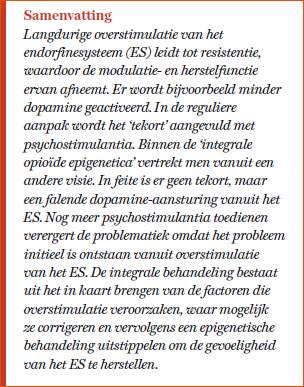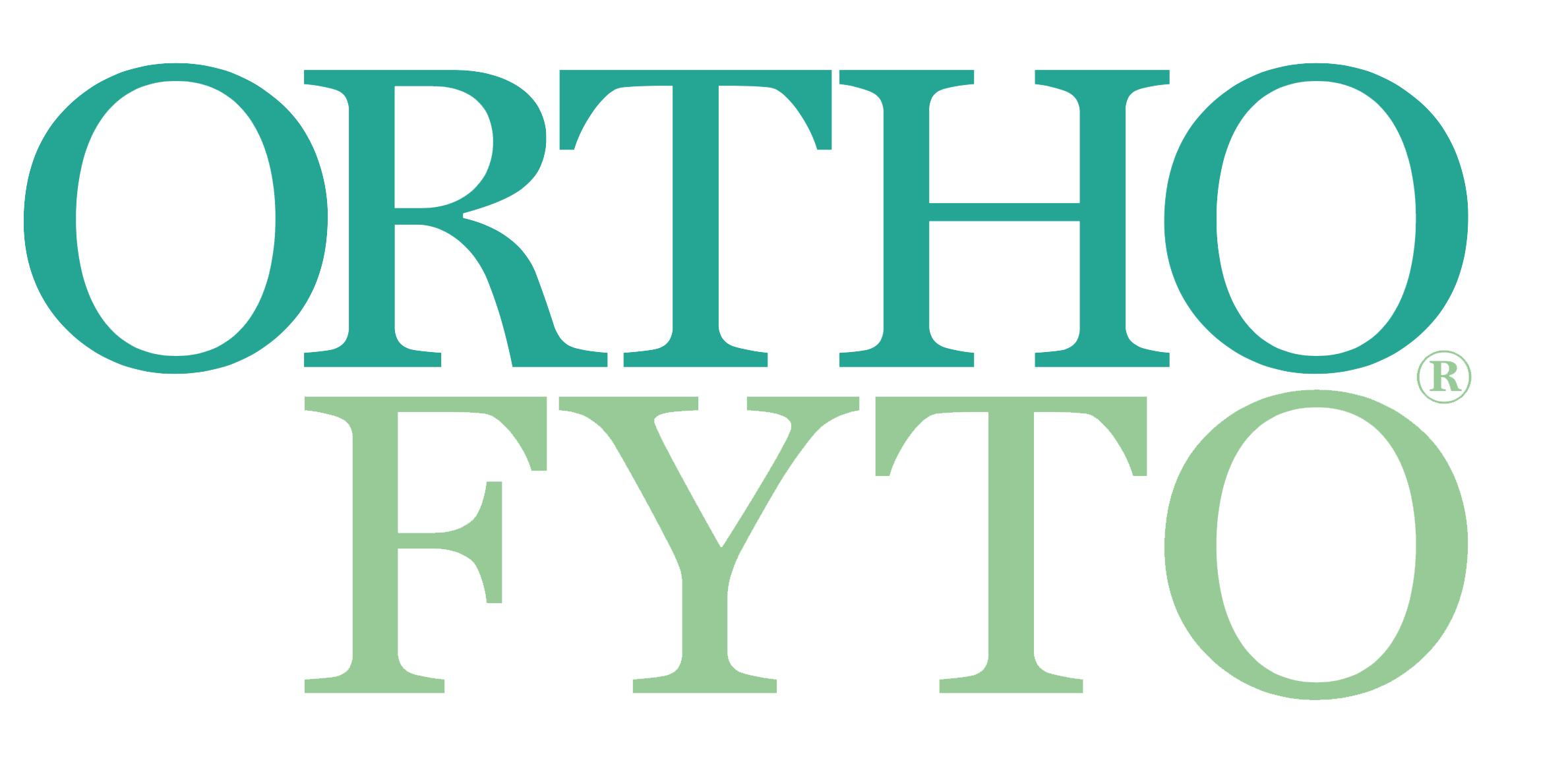Verslavend voedsel put het endorfinesysteem uit
11 Apr, 2019
Door: Lucas Flamend

Een verminderde gevoeligheid (resistentie) van het endorfinesysteem is een belangrijke factor in het ontstaan van chronische aandoeningen. Resistentie komt door overstimulatie van het endorfinesysteem. Een belangrijke oorzaak van overstimulatie is troostvoeding. De belonende en rustgevende effecten ervan worden veroorzaakt door het activeren van endorfine, dopamine en GABA. Vooral suiker, smaakversterkers en exorfinen – voedingsopiaten in gluten, zuivel en soja – hebben dit effect. Met het behandelmodel van de ‘integrale epigenetica’ stellen we het lichaam in staat om zelf de ES-functie te herstellen.
Iedereen kent endorfine als het ‘feel good’-stofje dat vrijkomt wanneer we een leuke ervaring hebben. Maar endorfine is zoveel meer. Endorfine maakt deel uit van het opioïde systeem, dat hier wordt uitgedrukt met de term ‘endorfinesysteem’. Het omvat de drie endogene opioïden: endorfine, enkefaline en dynorfine dat functioneert als zelfregulerend feedbacksysteem. Het endorfinesysteem is onder meer betrokken bij de regulatie van het immuunsysteem, de stressrespons, de glucosehuishouding en het beloningssysteem.
Endorfine werd in de jaren zeventig ontdekt door Schotse wetenschappers. Ongeveer in dezelfde periode vond Candace Pert – professor in de farmacologie – de endorfine receptoren in de hersenen. Neurofarmacoloog Pert heeft haar verdere carrière gewijd aan het bestuderen van endorfine. Ze noemde het de ‘mastermolecule’ van het lichaam. Pert is niet de enige die zich verwonderde over endorfine. De British Pharmacological Society publiceerde in 2006 een artikel waarin ze 75 jaar onderzoek samenvatten m.b.t. de werking van de medicinale en endogene opioïden. De wetenschappers in dit artikel noemden het endorfinesysteem de heilige graal van het lichaam1. In 2018 verscheen een artikel van de oncologische afdeling van het Krishnadevaraya College in India met de titel Endorphins – A Novel Natural Holistic Healer.2
Lees het gehele artikel vanaf pagina 18 in OrthoFyto 2/19.
Wilt u het hele artikel als PDF bestand ontvangen? Bestel het dan hier voor € 3,50
Bronvermelding:
- Corbett, A. D., Henderson, G., McKnight, A. T., & Paterson, S. J. (2006). 75 years of opioid research: the exciting but vain quest for the Holy Grail. British Journal of Pharmacology, 147(S1), S153–S162.
- Shrihari. J (2018). BETA – Endorphins – A Novel Natural Holistic Healer J Microb Biochem Technol, an open access journal ISSN: 1948-5948 10(2), 25–25.
- Amin, O. R., & Abdou, A. A. (2011). Dermorphin peptide action in a sample of Arab children with autistic spectrum disorder. Egyptian Journal of Neurology, Psychiatry and Neurosurgery, 48, 19–24.
- Suzuki, S., Chuang, L. F., Yau, P., Doi, R. H., & Chuang, R. Y. (2002). Interactions of opioid and chemokine receptors: oligomerization of mu, kappa, and delta with CCR5 on immune cells. Experimental Cell Research, 280(2), 192–200.
- Jarmołowska, B., Bielikowicz, K., Iwan, M., Sidor, K., Kostyra, E., & Kaczmarski, M. (2007). Serum activity of dipeptidyl peptidase IV (DPPIV; EC 3.4.14.5) in breast-fed infants with symptoms of allergy. Peptides, 28(3), 678–682
- Kalyuzhny, A. E., & Wessendorf, M. W. (1998). Relationship of mu- and delta-opioid receptors to GABAergic neurons in the central nervous system, including antinociceptive brainstem circuits. The Journal of Comparative Neurology, 392(4), 528–547
- Okuyama, K., Ide, S., Sakurada, S., Sasaki, K., Sora, I., Tamura, G., … Ohno, I. (2012). μ-opioid receptor-mediated alterations of allergen-induced immune responses of bronchial lymph node cells in a murine model of stress asthma. Allergology International: Official Journal of the Japanese Society of Allergology, 61(2), 245–258
- Li, J., Zhang, Z., Liu, X., Wang, Y., Mao, F., Mao, J., … Wang, Q. (2015). Study of GABA in Healthy Volunteers: Pharmacokinetics and Pharmacodynamics. Frontiers in Pharmacology, 6, 260.
- Wen, T., Peng, B., & Pintar, J. E. (2009). The MOR-1 opioid receptor regulates glucose homeostasis by modulating insulin secretion. Molecular Endocrinology (Baltimore, Md.), 23(5), 671–678
- Ondrovics, M., Hoelbl-Kovacic, A., & Fux, D. A. (2017). Opioids: Modulators of angiogenesis in wound healing and cancer. Oncotarget, 8(15), 25783–25796.
- Reul, J. M. H. M., & Nutt, D. J. (2008). Glutamate and cortisol--a critical confluence in PTSD? Journal of Psychopharmacology (Oxford, England), 22(5), 469–472.
